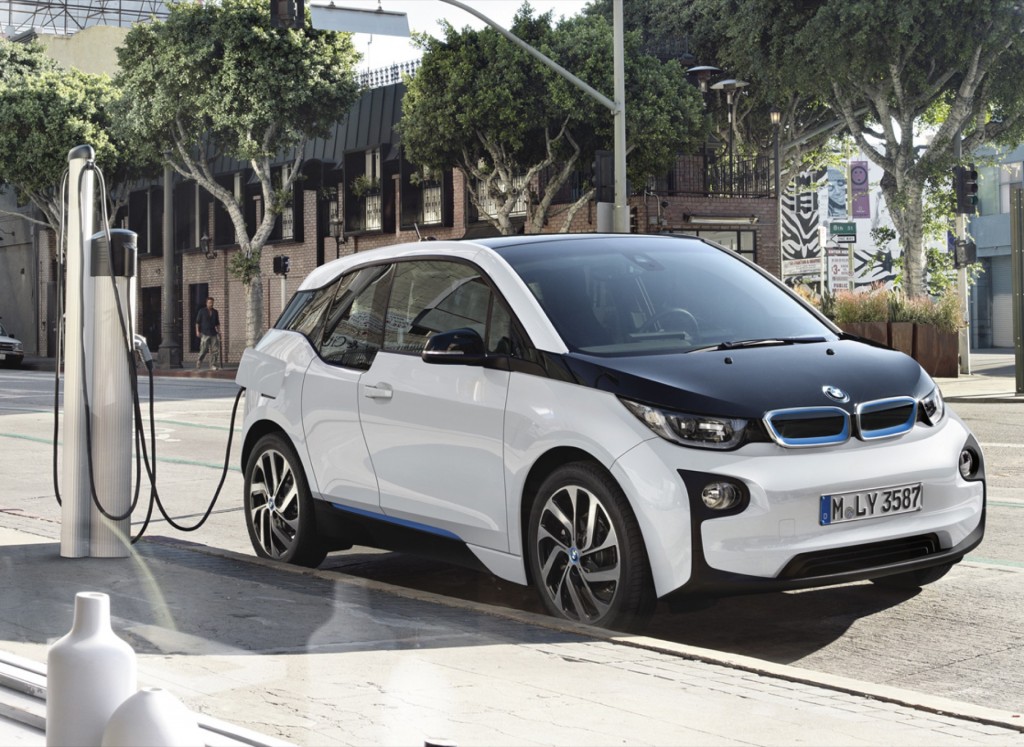The continuing tepid sales of the Nissan Leaf electric car, despite a range upgrade to 107 miles, remains one of the puzzles in the plug-in car market.
Sure, it's an aging model now in its sixth year with a polarizing design; it lost a huge swath of buyers in Georgia when that state canceled its electric-car tax credit; and gas is cheap.
But the 2016 Nissan Leaf is the very first nationally available electric car to offer more than 100 miles of range at a mass price.
DON'T MISS: What hurts Nissan Leaf sales: Tesla Model 3 or Chevy Bolt EV electric cars?
Two weeks ago, this site looked at possible reasons for the Leaf's slow sales, including the imminent arrival of the 200-mile 2017 Chevrolet Bolt EV.
Then there's the Tesla Model 3, promised to go into production in the second half of 2017 (most analysts and competitors are skeptical that Tesla Motors can make that deadline).
As the best-selling electric car in history (roughly 250,000 and counting), the longer-range Nissan Leaf was supposed to provide a sales boost in the waning years before it's replaced with an all-new model.

2016 Nissan Leaf
Its battery capacity rose from 24 kilowatt-hours to 30 kwh, giving it an EPA-rated range of 107 miles—more than any 2016 electric car not named Tesla.
The 2017 BMW i3 is following suit, with a 114-mile range from a battery pack that rose from 22 to 33 kwh, fully 50 percent more capacity.
The older, lower-range models of both the Leaf and BMW's i3 will stay in the range, at least for a year, as the entry-level version for those who want to pay as little as possible.
READ THIS: Plug-in electric car sales for May flat: Leaf struggles despite range boost
The Volkswagen e-Golf, too, is expected to get a boost in range to something between 100 and 120 miles.
That updated e-Golf, part of a broader freshening of the entire Golf range for the 2018 model year, should show up sometime next spring.
So that's all good: the cars that delivered 80 or so miles of range two or three years ago now offer 105 to 115 miles for about the same price.

2016 Volkswagen e-Golf
Yet that range increase has done nothing at all to raise Leaf sales.
Is the impact of the 200-mile, $37,500 Chevy Bolt EV really that large? Could the promise of a 200-mile, $35,000 Tesla at some point in the undefined future really be hurting sales of today's electric cars.
CHECK OUT: Tesla Model 3 reservations: 373K after duplicates, speculators removed
The answer may be yes.
And our reader Chris O, in a comment on the Leaf sales analysis two weeks ago, raised an even more unsettling prospect.

2017 BMW i3
What if the entire crop of electric cars with 100-plus miles of range that will launch for 2016 through 2018 are already a "lost generation" doomed to tepid sales?
It would be no more than a broader application of the Osborne Effect to a class of cars that buyers expect to offer far better specs far more quickly than for conventional cars.
The Osborne Effect is named after the Osborne Computer Company, whose sales plummeted in 1983 after it announced its next product more than a year before it went on sale.
WATCH THIS: Chevrolet Bolt Electric Car Concept Video (Jan 2015)
While the full story is more complex, and included a drastic price cut on existing models that put their revenue below their cost of manufacture, the company ultimately ran out of cash.
Osborne declared bankruptcy in 1985, and is remembered today mostly for the syndrome describing the unintended consequences of announcing much better products too early.
If an electric car with a price below $40,000 and a range of 200 or more miles is so significantly more attractive, you might expect the Chevy Bolt EV to pull sales from the Leaf, the i3, the e-Golf, and other lower-volume battery-electrics when it goes on sale.

2017 Chevrolet Bolt EV pre-production vehicles at Orion Township Assembly Plant, March 2016
That won't happen until the very end of this year, perhaps even the earliest months of next year, and it'll likely take six months or more for the full sales picture to become evident.
By then, the 107-mile Leaf will have been on sale for 18 months, and the 2017 BMW i3 for a year. The 2018 VW e-Golf may just be hitting the market.
Meanwhile, absent unpredictable events like a sudden geopolitical energy-security shock or soaring gas prices, even the higher-range battery-electric cars from Nissan, BMW, and Volkswagen may be in for some tough sales sledding this year.
_______________________________________













